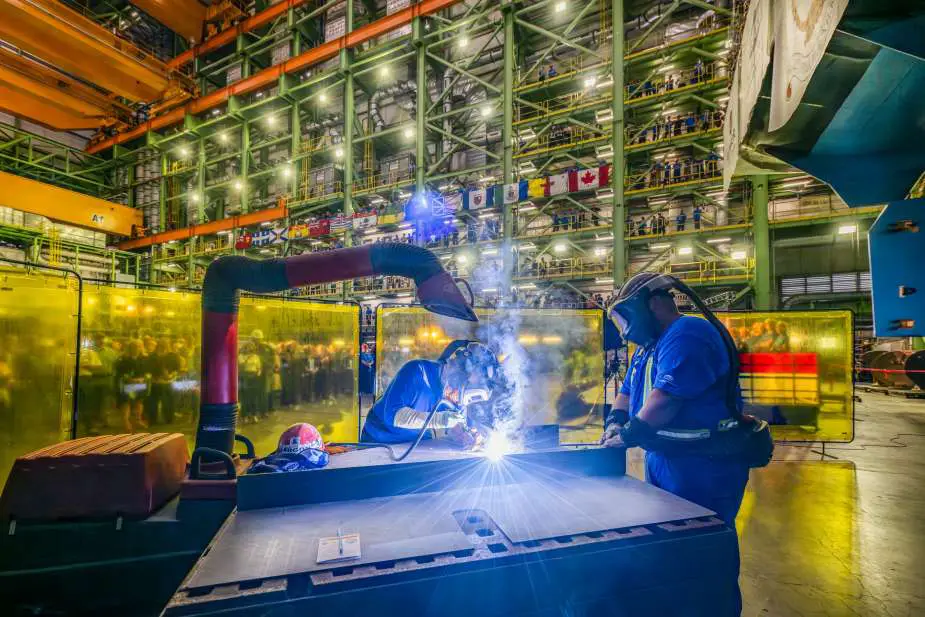Breaking news
Irving Shipbuilding cuts steel for 1st Arctic and Offshore Patrol Ships for Canadian Coast Guard.
According to a PR published by Irving Shipbuilding on August 8, 2023, the company commenced construction on the seventh Arctic and Offshore Patrol Ship (AOPS) for the Canadian government at the Halifax Shipyard.
Follow Navy Recognition on Google News at this link
 Steel cutting ceremony for the first Arctic and Offshore Patrol Ship – Coast Guard variant. (Picture source: Irving Shipbuilding)
Steel cutting ceremony for the first Arctic and Offshore Patrol Ship – Coast Guard variant. (Picture source: Irving Shipbuilding)
This event, attended by notable figures including Robb Wight, Director General for Vessel Procurement of the Canadian Coast Guard, Rear-Admiral Josée Kurtz, and the Hon. Sean Fraser, signals the initiation of a significant vessel designed for a variety of missions from fisheries enforcement to search and rescue in the Arctic region.
The National Shipbuilding Strategy has commissioned Irving Shipbuilding to construct a total of eight AOPS vessels, six for the Royal Canadian Navy and two for the Canadian Coast Guard, as well as 15 Canadian Surface Combatants. With the first three AOPS already in service with the Royal Canadian Navy, the upcoming vessels are on track for delivery in the next few years.
The strategy aims to bolster Canada's naval capabilities while stabilizing the nation's shipbuilding industry, enabling Halifax shipbuilders to enhance their expertise and reinforce vital supply chains. This effort ensures the safety of Canada's naval forces and strengthens Canada's international security presence.
Technical data about Harry DeWolf-class OPVs
The Harry DeWolf class OPVs have a displacement of 6,615 tons, a length of 103.6 meters, and a beam of 19 meters. With a Polar Class 5 ice rating, they can move at 3 knots in ice up to 1 meter thick and achieve speeds of 17 knots in open waters, powered by a diesel-electric propulsion system with four MAN 6L32/44CR engines.
These vessels can cover 6,800 nautical miles at 14 knots and can carry two 8.5-meter multi-role rescue boats and a 12-meter landing craft. Typically accommodating 65 Royal Canadian Navy personnel, they have space for up to 87 individuals.
Their defense systems include a BAE Mk 38 25mm gun, two M2 Browning machine guns, and an array of sensors such as SATCOM (Link 16), multichannel VHF/HF radios, and anti-missile detection systems.
They also have provisions for a Sikorsky CH-148 Cyclone, a Bell CH-146 Griffon, or a CU-176 Gargoyle UAV, with an onboard hangar and a vehicle bay for various land vehicles.




























